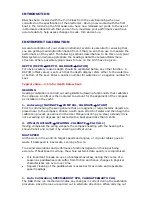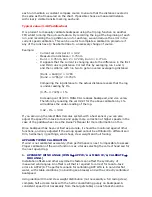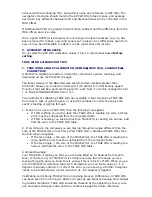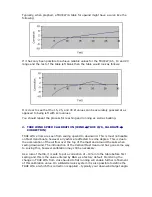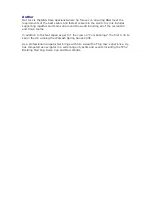
INTRODUCTION
B&G has been involved with the X-35 Class from the very beginning when we
consulted on the specification of the electronics. Having now worked with the first
boat in the UK during the first season we have now released our guide to the use of
instruments onboard such that you can truly maximise your performance and have
accurate data to help assess changes to sails, trim and set-up.
INSTRUMENT CALIBRATION
Accurate calibration of your chosen instrument system is essential for ensuring that
you are getting meaningful information from it that you can then use to measure the
performance of the yacht. The following sections describe how to do this on a typical
B&G system and where appropriate the headings detail the relevant B&G menu
structure. Where possible typical values for use on the X-35 have be given.
DEPTH
(DEPTH
→
DEPTH, CALBRATE
→
DATUM)
For obvious safety reasons depth should be calibrated before any other function. A
DATUM (offset value) is set such that the depth display refers either to the waterline
or bottom of the keel. Enter a positive number for waterline or a negative number for
keel.
Typical value: –2.1m for depth below keel.
HEADING
Heading calibration is carried out using B&G’s Autoswing functionality that calibrates
the compass. An offset is then entered to account for the alignment of the compass
as installed on the yacht.
1.
Autoswing (NAVIGATE
→
COMP CAL, CALBRATE
→
START)
Prior to commencing the swing ensure that no magnetic or large metallic objects are
placed near to the compass. Choose a calm open stretch of water and then begin the
calibration process as outlined in the User Manual ensuring you steer a steady circle
not exceeding 2-3 degrees per second with a boat speed less than 5 knots.
2.
Offset (NAVIGATE
→
HEADING, CALBRATE
→
CAL VAL 1)
Having completed the swing compare the compass heading with the bearing of a
known transit and correct it by entering an offset value.
BOATSPEED
All the work in the world on target speeds and angles, or on polar tables goes to
waste if boatspeed is inaccurate, even by a few %.
True wind calculations and performance functions depend on this input being
accurate. If boat speed is wrong, the whole system's data quality is compromised
.
•
It is important to keep an eye on boatspeed accuracy during the course of a
season as paddlewheels do suffer from friction and hence changes in physical
characteristics can occur over time.
•
Regular cleaning of the paddlewheel is essential for accurate and repeatable
speed readings.
1.
Auto- Calibration (SPEED
→
BOAT SPD, CALBRATE
→
AUTO CAL)
The B&G three run method eliminates any changes in current during the calibration
procedure since the runs are carried out in alternate directions. When carrying out


